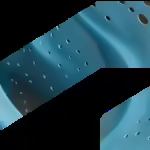The 3D component vendor absorbs Adobe’s 3D development center in Lyon, France and takes over responsibility for the development and support of Adobe’s 3D CAD translation and 3D PDF technology.
 3D component vendor Tech Soft 3D has agreed to take over development and support of the Adobe 3D technologies best known as 3D PDF and currently in Adobe Acrobat Pro Extended. The development team, the former TTF group in Lyon, France, will become part of Tech Soft 3D (TS3D) as soon as the deal closes around July 1.
3D component vendor Tech Soft 3D has agreed to take over development and support of the Adobe 3D technologies best known as 3D PDF and currently in Adobe Acrobat Pro Extended. The development team, the former TTF group in Lyon, France, will become part of Tech Soft 3D (TS3D) as soon as the deal closes around July 1.
The deal is structured as a long-term contract, in which Adobe licenses TS3D to maintain, distribute, and support Adobe’s 3D technology. TS3D will be the developer going forward, but Adobe will continue to own the intellectual property. Specific financial terms of the agreement were not disclosed, but VEKTORRUM did learn that Tech Soft 3D is not paying a license fee for access to Adobe’s technology.
The affected technology—a 3D CAD translation suite and PDF publishing software development kit (SDK)—allows OEM development teams to create applications that access data from over 25 popular 3D file formats, and to publish rich 3D PDF files in the PRC and U3D formats used by Adobe Acrobat for 3D. Adobe will continue to support viewing of and interaction with 3D data within its applicable products, including the free Adobe Reader software.
As soon as TS3D takes over, the first order of business will be to convert the existing SDK and translation suite to pure library form, for easier integration by developers. TS3D will continue to develop updated CAD translators available to end users as plug-ins to applicable Adobe software for reading and outputting 3D PDF. TS3D also plans to work on tighter integration of its HOOPS rendering technology and the Acrobat PRC 3D format going forward. 
“This CAD translation technology has long been considered best-in-class, so we’re eager to provide it in pure library form to best help developers with their data access needs and to allow Acrobat users to access a broad set of CAD formats,” says Tech Soft 3D CEO, Ron Fritz. “With the growing popularity of 3D PDF as a standard for collaboration and data exchange, we anticipate that leading 3D software developers such as Anark Corp., Lattice 3D, and Kubotek will welcome the ability to publish data in the PRC and U3D formats. I’m also looking forward to Tech Soft 3D’s continued participation in the ISO working group developing PRC as an open standard.”
Background to the Deal
In the midst of the recession in 2009, Adobe conducted an internal review of all company product lines, with an eye to how they were helping to meet corporate business goals. A review of Acrobat 3D PDF led Adobe to believe it would be better for it to specialize on broad platform products, and to off-load specific vertical solutions and technologies to specialists. In November 2009 Adobe laid off the manufacturing solutions group and began the process that lead to the deal with TS3D.
TS3D was already a reseller for the Adobe translation technology, embedded inside Acrobat Pro extended. “Despite [Adobe’s strange packaging] the translators worked well, and was a popular product for us,” said TS3D’s Fritz. “When Adobe started rethinking 3D, we told them, ‘its complimentary to HOOPS, we could take it forward.’ They looked around, then agreed.”
 Kumar Vora, VP and general manager of Adobe’s LiveCycle Business Unit, told VEKTORRUM that 3D is still very much part of the long-term strategy for Adobe Acrobat. “I can’t stress this enough,” said Vora, “Adobe is fully committed to supporting 3D viewing and interaction capabilities within Adobe Reader and Acrobat. We recognize our responsibility to customers worldwide who depend on 3D PDF to collaborate, control, and store their product development data for long-term archival and retrieval. That commitment hasn’t diminished, and, I think, has actually strengthened through this partnership.”
Kumar Vora, VP and general manager of Adobe’s LiveCycle Business Unit, told VEKTORRUM that 3D is still very much part of the long-term strategy for Adobe Acrobat. “I can’t stress this enough,” said Vora, “Adobe is fully committed to supporting 3D viewing and interaction capabilities within Adobe Reader and Acrobat. We recognize our responsibility to customers worldwide who depend on 3D PDF to collaborate, control, and store their product development data for long-term archival and retrieval. That commitment hasn’t diminished, and, I think, has actually strengthened through this partnership.”
What about LiveCycle?
Adobe’s LiveCycle product suite, for enterprise document sharing, is not included in this deal. LiveCycle includes the ability to take a CAD file, such as from CATIA, and deliver a 3D PDF on demand. A second company, to be named, will take charge of the LiveCycle file publishing technology, and TS3D will work with it on the 3D aspects.
The Final Analysis
Adobe saw Tech Soft 3D as being in the best position to advance the technology. It is a component provider, not a specific PLM player. TS3D will license PRC and the related technologies to anyone. As TS3D succeeds, it will help the continued proliferation of PRC, and by extension be good for Adobe’s continued sales of LiveCycle and Acrobat.
This deal has win-win-win written all over. Adobe wins by cutting itself loose from a technology and development environment it never really understood. Tech Soft 3D wins by enhancing its reputation as the neutral broker for best-of-breed 3D and CAD component technologies. Users of 3D PDF gain by having a development team working the 3D PDF technologies independent of Adobe’s upgrade cycles or internal politics.
3D PDF is gaining mind share in many manufacturing realms, especially in aerospace where the need for long-term archiving is crucial. With a neutral broker like TS3D leading the way, it will be easier for software developers and users to rally around PDF 3D as both an exchange format and an archive standard. Vendors and users alike gain an ally that understands the specifics of 3D engineering technology, with the added benefit of not having to wait on Adobe to understand what they need. §





